
Roots
The quiet discomfort, a subtle itch, or a sudden flare of redness upon the scalp often prompts a deeper inquiry into the very substances we invite into our most intimate spaces ❉ our hair. For those with textured strands, the relationship with hair products runs deeper than mere aesthetics; it is a dialogue with heritage, a connection to self, and a ritual of care passed through generations. Yet, within this intimate exchange, certain ingredients can disrupt the scalp’s delicate equilibrium, leading to a cascade of unwelcome sensations. Understanding these potential disruptors begins with a foundational appreciation for the scalp itself, a living landscape often overlooked in the pursuit of luscious lengths.
The scalp, a unique extension of our skin, boasts a rich network of sebaceous glands, hair follicles, and nerve endings, all working in concert to support hair growth and provide a protective barrier. When this intricate system encounters compounds perceived as hostile, it reacts. These reactions can range from mild irritation, characterized by a slight tingling or dryness, to more pronounced manifestations like itching, burning, flaking, or even painful lesions. The way our scalp responds is deeply personal, influenced by individual sensitivities, genetic predispositions, and even the surrounding environment.

The Scalp’s Protective Veil
Beneath the hair’s canopy, the scalp maintains a complex ecosystem. Its outermost layer, the stratum corneum, serves as a primary defense, a finely calibrated shield against external aggressors and excessive moisture loss. This barrier relies on a balanced lipid layer and a healthy microbiome, a community of microorganisms that peacefully coexist, contributing to its resilience.
When harsh chemicals strip away natural oils or disrupt this microbial balance, the barrier weakens, leaving the underlying skin vulnerable. Think of it as a garden; if the soil is disturbed, the plants struggle to thrive.
The follicular units, from which each strand emerges, are also exquisitely sensitive. These tiny pockets house the hair bulb, the very engine of hair production, and are surrounded by nerve endings. Inflammation around these follicles, often triggered by irritating substances, can manifest as tenderness or soreness, sometimes even contributing to temporary hair shedding. Recognizing these early signals is a gentle whisper from your scalp, urging you to listen and adjust.
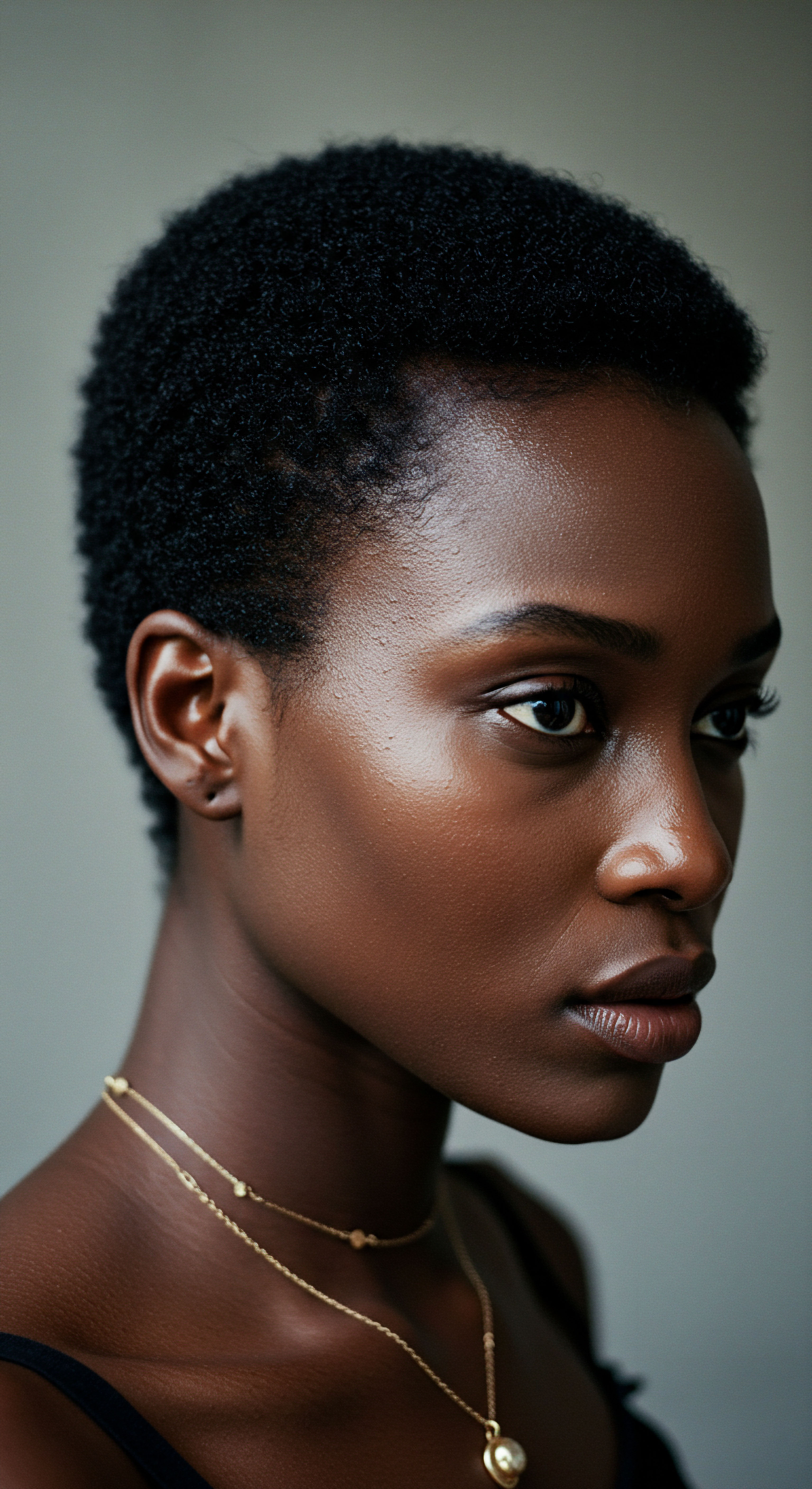
Irritation’s Diverse Faces
Scalp irritation from hair products primarily manifests in two forms ❉ Irritant Contact Dermatitis and Allergic Contact Dermatitis. While their outward expressions may appear similar, their underlying mechanisms differ significantly. Irritant contact dermatitis occurs when a substance directly damages the skin cells, causing an immediate, dose-dependent reaction. It is a direct assault on the scalp’s protective capabilities.
This type of reaction can happen to anyone if the concentration of the irritant is high enough or exposure is prolonged. Common culprits include strong detergents or highly alkaline ingredients that strip the scalp’s natural oils.
Allergic contact dermatitis, conversely, involves the immune system. This reaction is not immediate; it is a delayed hypersensitivity response that develops after repeated exposure to a specific allergen. Once the immune system identifies an ingredient as a threat, it mounts a defense, often resulting in itching, redness, swelling, and sometimes blistering, typically appearing 24 to 72 hours after contact.
This immune system memory means even a minuscule amount of the allergen can trigger a severe reaction in a sensitized individual. Identifying these specific allergens often requires patch testing, a dermatological detective work.
Understanding the scalp’s delicate nature and the distinct pathways of irritation—direct assault versus immune system response—is the first step toward serene scalp health.
A study analyzing North American Contact Dermatitis Group data from 2001 to 2016 revealed that out of 38,775 patients tested, a notable 9.0% exhibited positive patch test reactions linked to hair care products. This research highlighted that p-phenylenediamine (PPD), methylisothiazolinone, methylchloroisothiazolinone/methylisothiazolinone, and cocamidopropyl betaine were among the most frequent allergens identified in these reactions. This statistical insight underscores the widespread impact of certain ingredients on scalp sensitivity.

Historical Echoes of Scalp Care
Across diverse cultures, the practice of caring for hair and scalp has always been imbued with intention. Ancient traditions often relied on naturally derived ingredients, recognizing the soothing and cleansing properties of botanicals. For example, in many African communities, clays, plant oils like shea butter and coconut oil, and herbal infusions were used not only for hair conditioning but also for scalp purification and comfort. These historical approaches, often rooted in empirical observation over generations, frequently prioritized gentleness and nourishment, intuitively sidestepping the harsh synthetic compounds prevalent in some modern formulations.
The shift towards industrial production introduced a new array of chemicals, some of which, while effective for certain functions, brought with them unintended consequences for scalp well-being. Examining these historical precedents can offer a gentle reminder of the enduring wisdom in simplicity and the power of natural elements in maintaining scalp harmony. It is a testament to ancestral knowledge that many modern wellness practices are now revisiting these time-honored remedies, seeking balance in an increasingly complex world of cosmetic chemistry.

Ritual
The daily or weekly engagement with our hair products forms a deeply personal ritual, a sequence of steps that can either comfort and protect or, inadvertently, provoke discomfort. This section moves from the foundational understanding of the scalp to the practical interplay of ingredients within these cherished routines. It is within these moments of application, lathering, and rinsing that many common irritants make their presence known, often disguised within the very formulas designed to cleanse, condition, or style. Understanding these subtle interactions is key to cultivating a truly nurturing hair practice.
The quest for cleansing, for instance, often introduces ingredients that can be particularly aggressive. Surfactants, the cleansing agents that create lather and lift away impurities, are essential. However, certain types, while efficient, can also strip the scalp of its protective lipids, leading to dryness, tightness, and itching.
Similarly, the desire for lasting scent or vibrant color can introduce compounds that, for some, trigger an unwelcome immune response. Navigating this landscape requires an informed awareness, a gentle discernment of what truly serves your scalp.
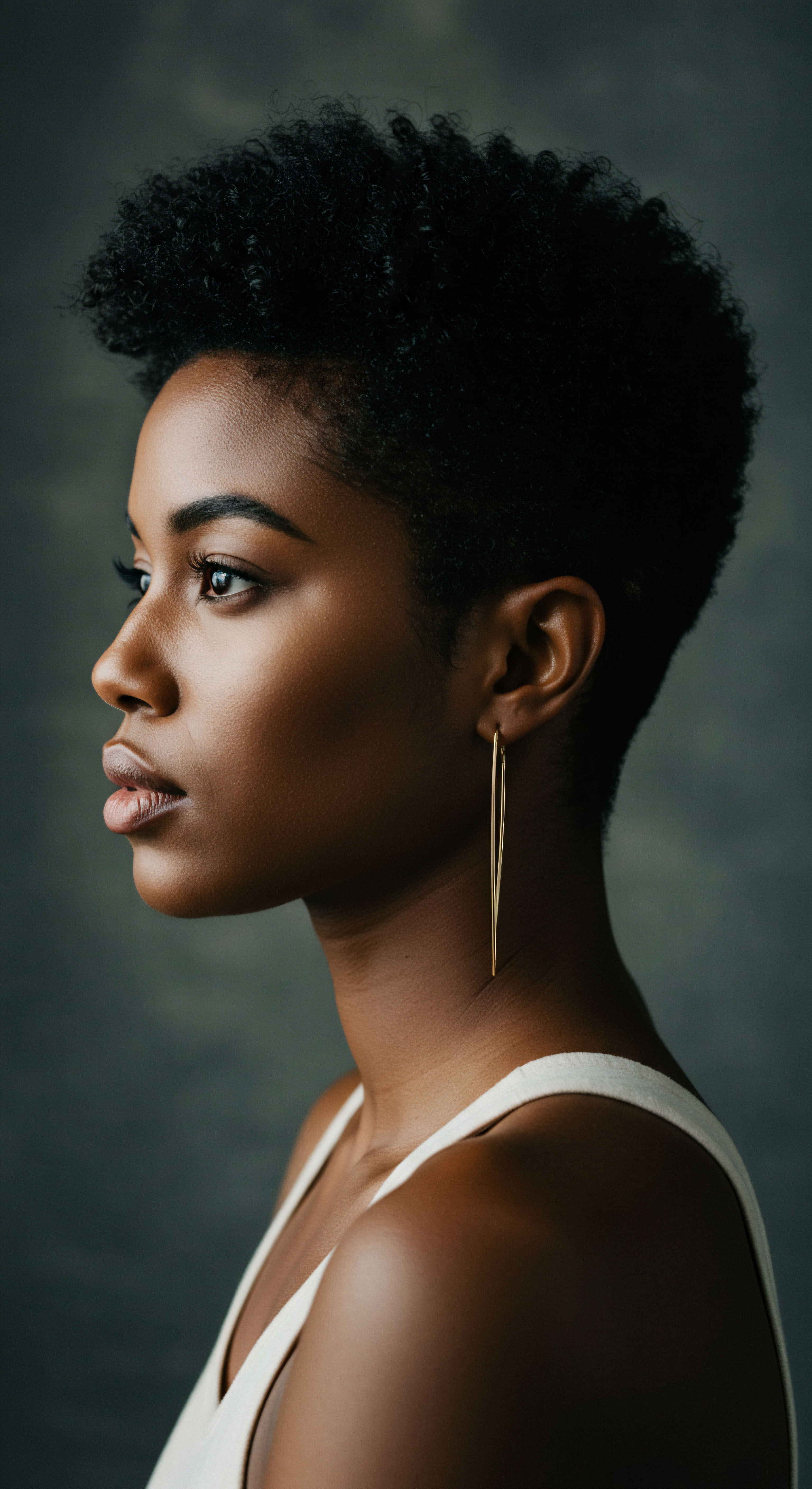
The Cleansing Conundrum
Among the most common irritants in hair products are certain Surfactants, particularly those that produce abundant foam. While a rich lather often signifies cleanliness in our minds, it can sometimes be a sign of ingredients that are overly efficient at dissolving oils, including the natural sebum vital for scalp health.
- Sodium Lauryl Sulfate (SLS) and Sodium Laureth Sulfate (SLES) are potent detergents found in many shampoos. While SLES is generally considered milder than SLS due to an ethoxylation process that reduces its irritancy, both can still be problematic for sensitive scalps. They can strip away the scalp’s natural moisture barrier, leading to dryness, flaking, and a sensation of tightness.
- Cocamidopropyl Betaine (CAPB), often presented as a milder alternative or a co-surfactant, can paradoxically be a significant allergen for some individuals. While less irritating than some sulfates, it is a common cause of allergic contact dermatitis in hair products. Its prevalence in formulations designed for sensitive skin means that those experiencing unexplained irritation, even with “gentle” products, might need to consider this ingredient.
The choice of cleanser sets the tone for the entire scalp environment. For those with textured hair, which often tends to be drier by nature, harsh surfactants can exacerbate existing dryness, leading to a compromised scalp barrier and increased susceptibility to irritation. Opting for sulfate-free or low-sulfate formulations can offer a gentler cleansing experience, preserving the scalp’s delicate balance.

Preservatives A Necessary Evil
Preservatives are indispensable in hair products, preventing the growth of harmful bacteria, yeasts, and molds that can contaminate formulations, especially those containing water. Without them, products would spoil rapidly, posing a health risk. Yet, some preservatives are notorious for causing scalp irritation and allergic reactions.
- Methylisothiazolinone (MI) and Methylchloroisothiazolinone (MCI), often found together as Kathon CG, were once widely used but have seen regulatory restrictions due to their high sensitizing potential. Despite reduced concentrations, they remain significant allergens for many. Even in rinse-off products, their presence can trigger reactions in sensitized individuals.
- Formaldehyde Releasers, such as DMDM Hydantoin, Imidazolidinyl Urea, and Quaternium-15, slowly release small amounts of formaldehyde over time to inhibit microbial growth. Formaldehyde is a known allergen and irritant, and even these low, continuous exposures can cause dermatitis for those with sensitivities.
The conundrum of preservatives highlights a balancing act ❉ protecting the product from microbial spoilage while safeguarding the user from irritation. For individuals with sensitive scalps, identifying products that use alternative, less sensitizing preservation systems, such as certain organic acids or plant-derived antimicrobials, becomes a critical part of their care ritual.
Every element within our hair care ritual, from cleansing agents to the unseen protectors against spoilage, holds the potential to either soothe or provoke the scalp’s delicate ecosystem.

Fragrance and Color’s Hidden Depths
The allure of a beautifully scented product or a vibrant hair color is undeniable. However, these sensory elements are frequent sources of scalp irritation.
Fragrances, often listed simply as “fragrance” or “parfum” on ingredient labels, are complex mixtures of numerous chemical compounds, many of which are known allergens. The sheer number of potential sensitizers within a single fragrance blend makes pinpointing the exact culprit challenging. Common fragrance allergens include certain essential oils (like limonene or linalool) and synthetic aroma chemicals. For a sensitive scalp, opting for fragrance-free products, or those explicitly stating they use only natural, non-sensitizing scents, can dramatically reduce the risk of irritation.
Hair Dyes, particularly permanent and semi-permanent formulations, are a significant source of allergic contact dermatitis. P-Phenylenediamine (PPD), a potent allergen, is the primary concern in many dark hair dyes. Reactions to PPD can be severe, ranging from intense itching and swelling of the scalp and face to systemic responses.
For individuals with textured hair, who may frequently use dyes to color or refresh their strands, patch testing before application is an indispensable safety measure. Alternative coloring options, such as henna (pure henna, not “black henna” which often contains PPD), or temporary color rinses, might offer a gentler approach.
| Ingredient Class Surfactants |
| Common Examples Sodium Lauryl Sulfate, Sodium Laureth Sulfate, Cocamidopropyl Betaine |
| Function in Product Cleansing, lathering |
| Potential Scalp Impact Dryness, stripping natural oils, allergic reactions (CAPB) |
| Ingredient Class Preservatives |
| Common Examples Methylisothiazolinone, Formaldehyde Releasers (DMDM Hydantoin) |
| Function in Product Prevent microbial growth |
| Potential Scalp Impact Allergic contact dermatitis, irritation |
| Ingredient Class Fragrances |
| Common Examples "Parfum," Limonene, Linalool |
| Function in Product Scent |
| Potential Scalp Impact Allergic reactions, itching, redness |
| Ingredient Class Dyes |
| Common Examples P-phenylenediamine (PPD) |
| Function in Product Coloring hair |
| Potential Scalp Impact Severe allergic contact dermatitis, swelling |
| Ingredient Class Alcohols |
| Common Examples Ethanol, Isopropyl Alcohol (in high concentrations) |
| Function in Product Quick drying, solvent |
| Potential Scalp Impact Dryness, irritation, flaking |
| Ingredient Class This table outlines common ingredient categories that can cause scalp irritation, their typical roles, and potential effects. |
Even seemingly benign ingredients like high concentrations of certain Alcohols (ethanol, isopropyl alcohol) in styling products can dehydrate the scalp, leading to dryness and flaking, especially in individuals prone to a dry scalp. Understanding the ingredients in your product, beyond just the marketing claims, allows for a more conscious and responsive hair care ritual.
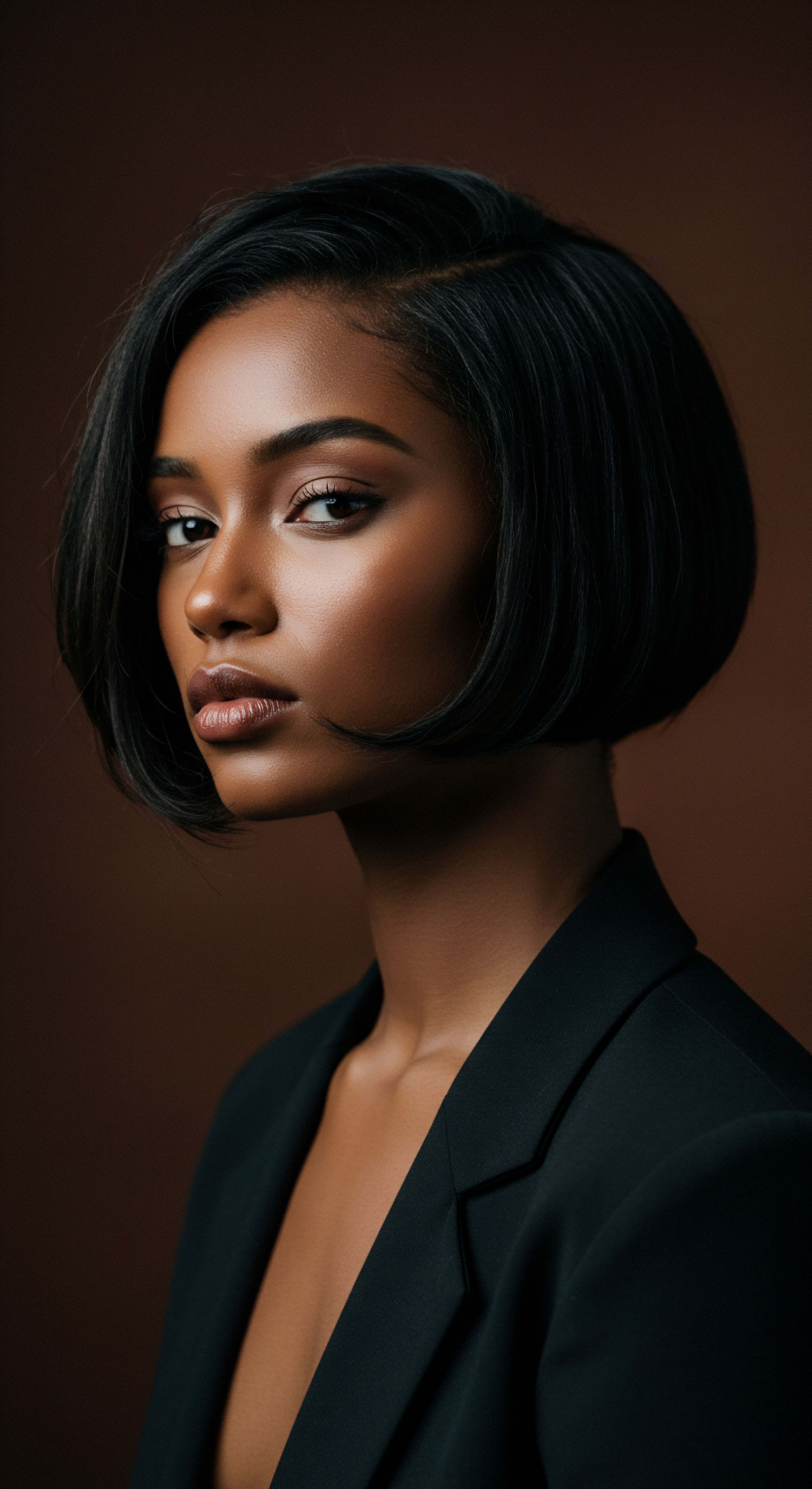
Relay
To truly comprehend the delicate balance of scalp health, we must move beyond surface-level observations and delve into the intricate interplay of chemistry, individual biology, and cultural practices. The quest for healthy hair, particularly within textured hair communities, often intersects with a complex landscape of product innovation and traditional remedies. What might appear as a simple irritation can, in fact, be a signal from a deeper system, a response to formulations designed without a full appreciation for the unique sensitivities of diverse hair types. This section aims to unearth these less apparent complexities, drawing on research and insights to provide a more profound understanding of why certain ingredients disrupt the scalp’s peace.
Consider the historical and ongoing use of chemical straighteners. These products, deeply woven into the hair journeys of many, particularly Black women, represent a powerful example of how transformative styling can sometimes come at a significant physiological cost. The ingredients used to alter hair’s natural curl pattern, such as lye (sodium hydroxide) or no-lye (guanidine hydroxide, calcium hydroxide), operate at extreme pH levels, designed to break down disulfide bonds within the hair shaft.
While achieving the desired straightening effect, this process can inflict chemical burns on the scalp if not applied with meticulous care, leading to severe irritation, inflammation, and even permanent hair loss in some instances. This practice, while culturally significant for many, highlights a profound tension between aesthetic desires and scalp well-being.
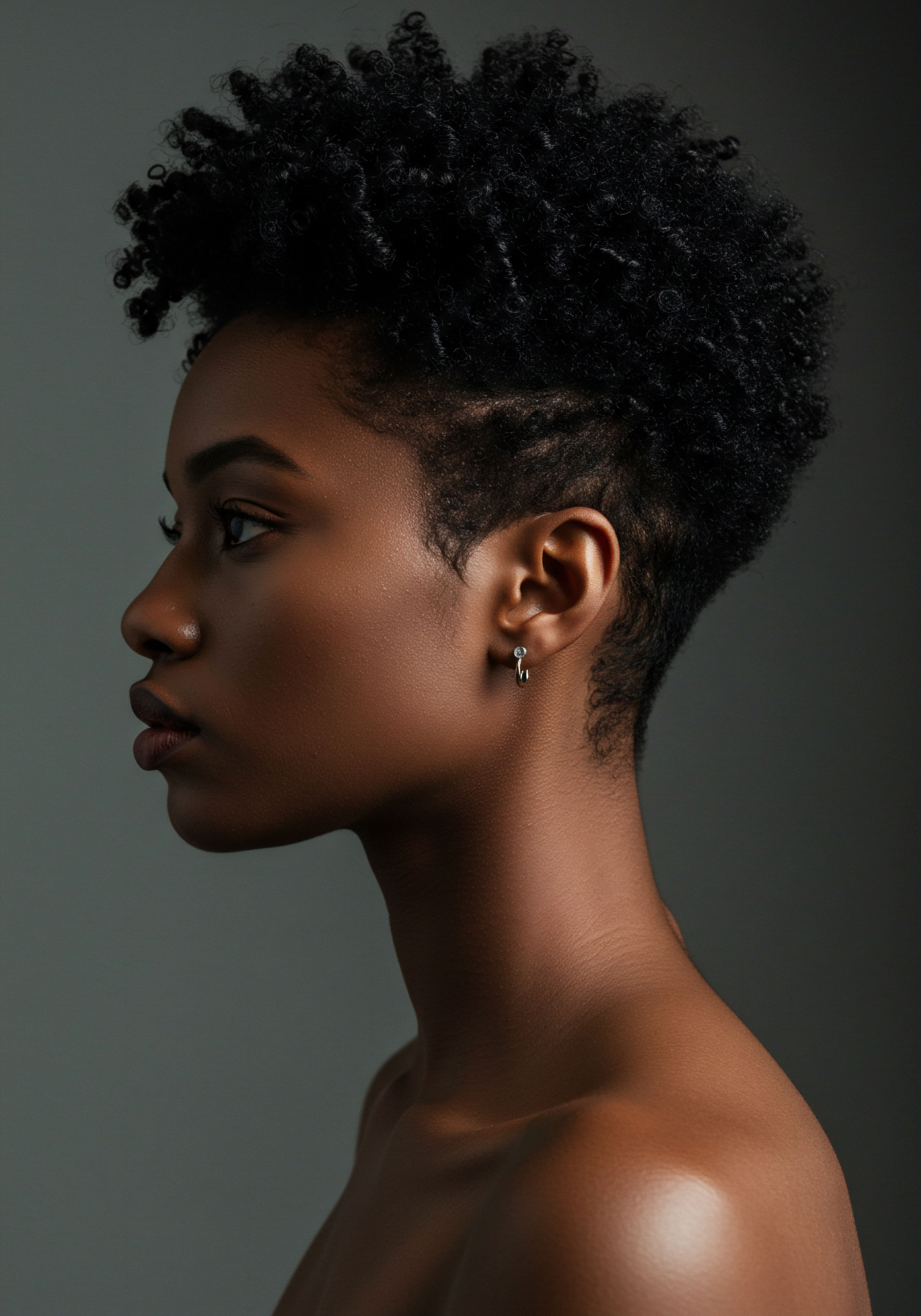
Beyond the Obvious Culprits
While sulfates, fragrances, and certain preservatives are well-documented irritants, the deeper exploration reveals a broader spectrum of ingredients capable of provoking scalp distress. The challenge lies in their often subtle, cumulative effects, or their presence in formulations where their irritating potential is not immediately apparent.
Certain Silicones, particularly those that are not water-soluble, can contribute to scalp issues. While they provide a smooth, glossy finish to hair by forming a barrier, this barrier can also trap dirt, product residue, and sebum against the scalp. Over time, this buildup can create an occlusive environment, leading to follicular clogging, itching, and potentially fostering the growth of certain microorganisms that thrive in such conditions, contributing to irritation or even dandruff. This is a classic example of an ingredient designed for one purpose (hair aesthetics) inadvertently impacting scalp health.
Another often overlooked category involves specific Botanical Extracts and Essential Oils. While many are lauded for their natural properties, some contain compounds that are potent allergens or irritants for susceptible individuals. For instance, tea tree oil, widely used for its antimicrobial properties, can cause contact dermatitis in higher concentrations or in sensitive individuals.
Similarly, extracts from citrus fruits (like limonene, linalool) or certain floral essences, while providing pleasant aromas, are common fragrance allergens. The assumption that “natural” equates to “safe” for all scalps is a simplification that overlooks the complex biochemistry of plant compounds.

The PH Paradox and Textured Hair
The pH of hair products plays a critical, yet often underestimated, role in scalp health, particularly for textured hair. The natural pH of the scalp and hair is mildly acidic, typically ranging from 4.5 to 5.5. This acidic mantle is crucial for maintaining the integrity of the skin barrier and the hair cuticle. Products with a significantly high (alkaline) or low (acidic) pH can disrupt this natural balance.
Highly alkaline products, such as many traditional relaxers or strong clarifying shampoos, cause the hair cuticle to swell and lift. While this is necessary for chemical processes, it can also disrupt the scalp’s protective barrier, leaving it vulnerable to irritation, dryness, and increased permeability to other potentially harmful ingredients. For textured hair, which often has a more open cuticle structure, this vulnerability can be heightened. The constant assault of products with imbalanced pH can lead to chronic scalp sensitivity, manifesting as persistent itching or flaking that defies conventional remedies.
The delicate dance between product chemistry and our scalp’s unique biology reveals a hidden layer of irritation, often stemming from ingredients and pH imbalances that silently challenge its natural defenses.
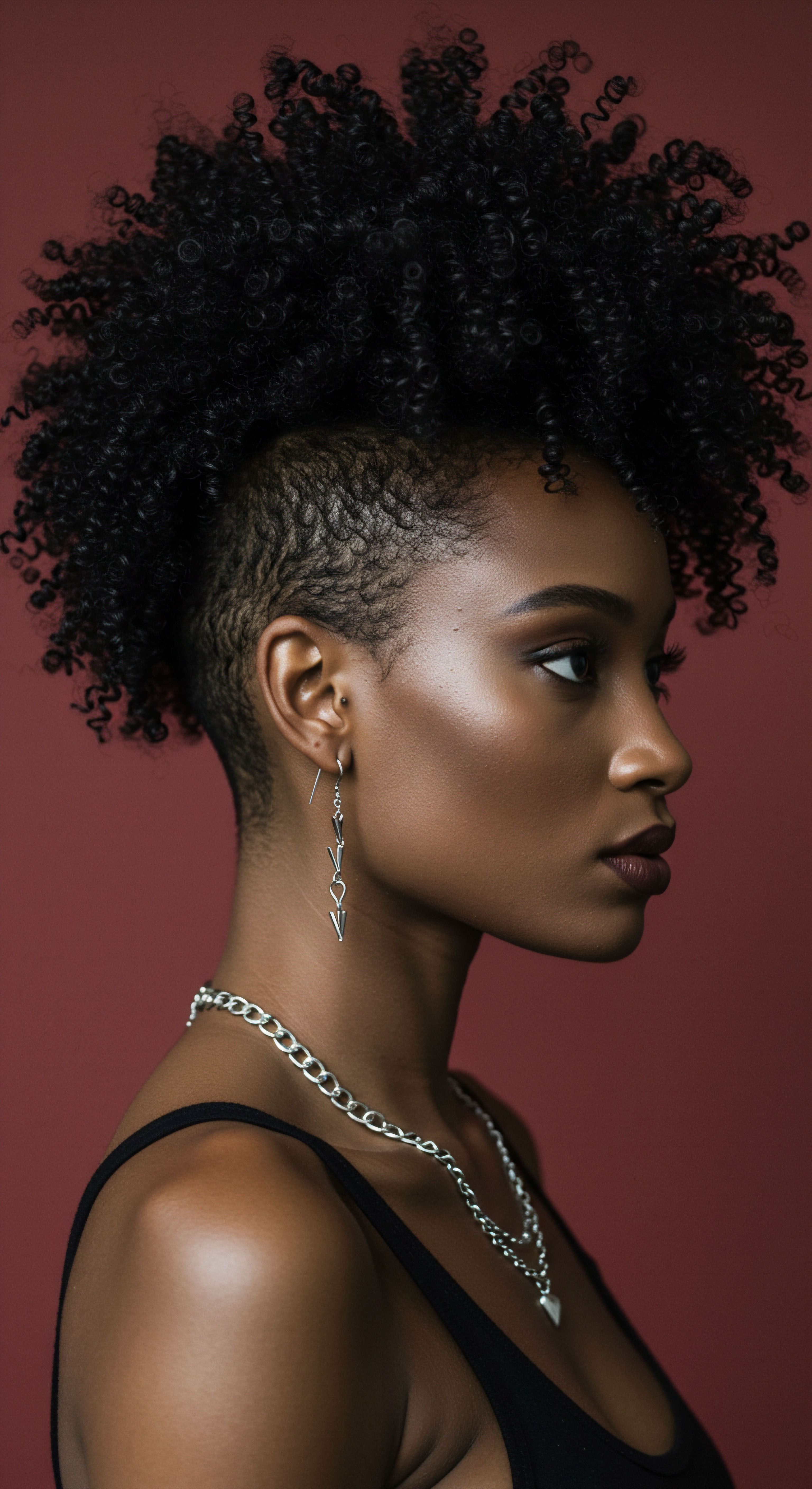
The Silent Threat of Contaminants and Impurities
Beyond the intentionally added ingredients, the possibility of contaminants or impurities within raw materials or during the manufacturing process can also contribute to scalp irritation. While less common, heavy metals, residual solvents, or byproducts from incomplete chemical reactions can find their way into formulations. Reputable manufacturers adhere to strict quality control standards to minimize these risks, but the sheer complexity of global supply chains means that vigilance is always warranted. This aspect highlights the importance of choosing products from transparent brands with robust testing protocols.
Furthermore, the interaction between multiple ingredients within a single product, or across different products used in a routine, can sometimes create new, irritating compounds. This phenomenon, known as synergy or interaction, means that even if individual ingredients are deemed safe, their combination might not be. This chemical alchemy makes pinpointing the exact cause of irritation a complex puzzle, often requiring meticulous elimination and reintroduction of products.

A Deeper Look at Allergen Exposure
The landscape of allergic contact dermatitis is constantly evolving, with new allergens gaining prominence as product formulations shift. Consider the rise of Isothiazolinones like Methylisothiazolinone (MI) and Methylchloroisothiazolinone (MCI). These preservatives became widespread as alternatives to parabens and formaldehyde releasers.
However, their increased use led to a significant surge in allergic reactions, so much so that MI was named the American Contact Dermatitis Society’s ‘Allergen of the Year’ in 2013. The European Union subsequently restricted their concentrations in cosmetic products, especially in leave-on formulations, to mitigate this public health concern.
This shift underscores a critical point ❉ regulatory bodies and scientific research often play a ‘relay’ role, responding to patterns of adverse reactions as they emerge from widespread consumer exposure. What is deemed safe at one point, based on initial testing, might prove problematic when introduced to a vast and diverse population over time. For individuals with textured hair, who may rely on a greater number of products or engage in more frequent styling practices, the cumulative exposure to such ingredients can be higher, potentially increasing their risk of sensitization.
The continuous dialogue between cosmetic science, consumer experience, and dermatological research is a testament to the ongoing journey of understanding scalp well-being. It encourages a mindful approach to product selection, one that respects the scalp’s innate sensitivities and the intricate chemistry at play.

Reflection
The journey into understanding what ingredients in hair products cause scalp irritation is not merely an academic exercise; it is a profound act of self-care, a reclamation of comfort, and a deeper appreciation for the nuanced needs of our unique scalps. We have traveled from the foundational elements of scalp biology to the intricate chemistry of product formulations, recognizing that every lather, every application, every styling choice holds the potential for either gentle nourishment or subtle discord. The answers to scalp irritation are rarely singular; instead, they lie within a thoughtful consideration of chemical properties, individual sensitivities, and the echoes of cultural practices that shape our hair care rituals. May this exploration empower you to listen more closely to your scalp’s whispers, guiding you toward a truly harmonious relationship with your hair and the products you choose to cherish it.

References
- Warshaw, E. M. Ruggiero, J. L. DeKoven, J. & DeLeo, V. A. (2021). Contact Dermatitis Associated With Hair Care Products ❉ A Retrospective Analysis of the North American Contact Dermatitis Group Data, 2001–2016. Dermatitis, 32(3), 200-209.
- Schlichte, M. J. & Katta, R. (2014). Methylisothiazolinone ❉ an emergent allergen in common pediatric skin care products. Dermatology Research and Practice, 2014.
- Isothiazolinones. (2017). Dermatology Online Journal, 23(8).
- Gavazzoni Dias, M. F. (2015). Hair Cosmetics ❉ An Overview. International Journal of Trichology, 7(1), 2-15.
- Jacob, S. E. (2017). Allergic contact dermatitis to methylisothiazolinone in hair care products ❉ report of a case. Dermatology Online Journal, 23(8).
- Shetty, V. H. et al. (2014). Effects of chemical straighteners on the hair shaft and scalp. Journal of Clinical and Diagnostic Research, 8(12), ZC01.
- Gavazzoni Dias, M. F. (2015). Hair Cosmetics ❉ An Overview. International Journal of Trichology, 7(1), 2-15.
- American Contact Dermatitis Society. (2013). Methylisothiazolinone named Allergen of the Year for 2013.
- Qian, H. et al. (2021). Patch testing patterns among various sociodemographic groups. Journal of the American Academy of Dermatology, 84(6), 1640-1647.
- Alinaghi, F. et al. (2019). The prevalence of allergic contact dermatitis in the general population ❉ A systematic review and meta-analysis. Contact Dermatitis, 80(3), 131-140.
- Scientific Committee on Consumer Safety. (2015). Opinion on Methylisothiazolinone (MI) in cosmetic products (SCCS/1557/15). European Commission.
- Silvestre, J. F. & Pastor-Nieto, M. A. (2016). Allergic Contact Dermatitis Due to Cosmetics ❉ A Clinical and Epidemiological Study in a Tertiary Hospital. Actas Dermo-Sifiliográficas, 107(1), 38-46.
- Rocha, B. O. et al. (2020). Black women’s hair ❉ the main scalp dermatoses and aesthetic practices in women of African ethnicity. Anais Brasileiros de Dermatologia, 95(5), 571-578.
- Warshaw, E. M. Ruggiero, J. L. DeKoven, J. & DeLeo, V. A. (2021). Contact Dermatitis Associated With Hair Care Products ❉ A Retrospective Analysis of the North American Contact Dermatitis Group Data, 2001–2016. Dermatitis, 32(3), 200-209.
- Al-Mutairi, N. & Al-Qattan, A. (2024). Hair Product Allergy ❉ A Review of Epidemiology and Management. Clinical, Cosmetic and Investigational Dermatology, 17, 335-345.